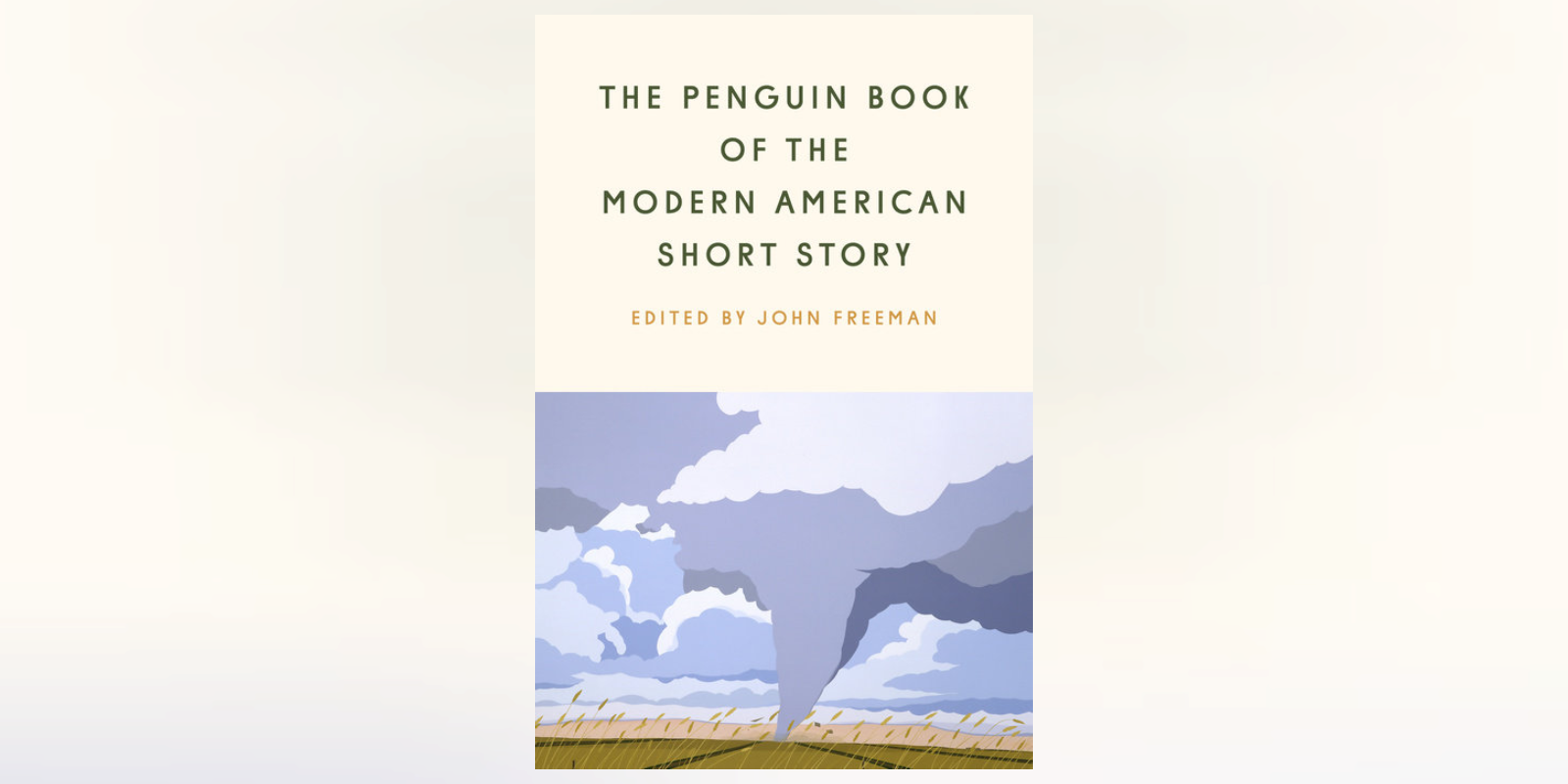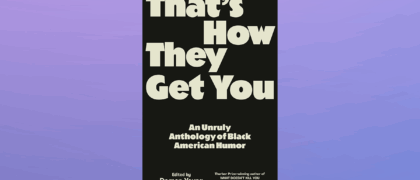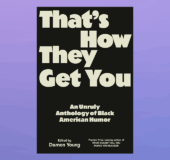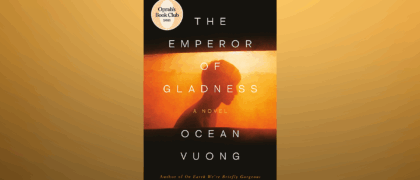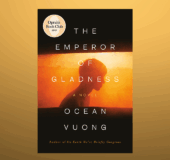Editor John Freeman reflects on his journey with the world of short stories in light of the upcoming release of The Penguin Book of the Modern American Short Story.
Click here to see the full Table of Contents for The Penguin Book of the Modern American Short Story.
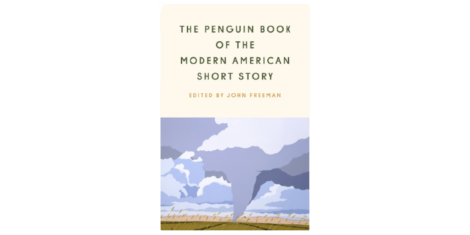
The Penguin Book of the Modern American Short Story
I GREW UP in an era perfectly designed for the anthology. We didn’t have access to the internet at my house in Sacramento, California in the 1980s. There were no online bookstores. We didn’t open the Sunday Sacramento Bee and pull out a books section between news and sports. I knew, I delivered the paper. Frankly, aside from Tower Books I didn’t step into a proper, well-curated bookstore until my family wandered into City Lights in San Francisco in 1984. To find out what was good I asked my teachers or went to the library and got lucky.
As a result, I was a late reader in many categories—especially when it came to anything to do with the present. My teachers at the public schools I attended were brilliant, ambitious and asked a lot of us. We began in high school AP English with Gilgamesh, proceeded through the history of literature in English, stopping at Chaucer, the Cavalier poets, and finished on a dusty plain sometime after Shakespeare but before, say Faulkner, Hemingway or O’Connor, the last of whom had been dead thirty years when I graduated. One teacher, an outlier, taught Zen and the Art of Motorcycle Maintenance to seniors and was adored by us for this news from the frontier of the living.
Incidentally, I loved the news. It arrived at my house everyday around 4:30 AM, flung from the side door of the Bee’s big diesel distribution truck, which rattled around the city’s eastern suburbs, dropping off sixty, eighty, one-hundred copies at a time to the dark houses of kids who delivered the morning paper. It astounds me how young we were—the paper deliverers. I started at age ten. I weighed 86 pounds. Some mornings that truck woke me, idling in our front driveway like a land-bound monster. Mostly it was my father, who’d swing by my room at 5:15 if I’d hit snooze button on my alarm. You’re late!
News, to me, was a family business. Both my brothers delivered the paper too. For most of my upbringing, the three of us began mornings at an ink-stained table in our parents’ garage, folding and rubber-banding papers, wrapping them in polybags if it was damp or raining, then pedaling off in the soft dark on our tricked out bikes, weighed down with as much as 100 pounds of newsprint. On those days I was 2/3 newsprint. My older brother often sped past me with well-timed insults. Hey skinny! He delivered the opposite of the street.
In this fashion, I became a reader. Folding the paper, it was hard not to notice if the day had begun in 40-point font. An earthquake. A war. A major death. Catastrophe led. Scandal, big change. There were no happy banner headlines. Still, it was thrilling. News for me, stood right behind time’s snowplow. Getting up early to (briefly read) and deliver it was like standing in the engineer’s booth of life’s train. I didn’t have delusions of control, but knowing the information early—this was before 24-hour news cycles as well—gave me a sober, stable feeling. To have an institution which registered constant change made it somehow a little more bearable. What else is American life—or life in general?
Everything else was after this, the slap of ink-stained paper landing on a doorstep—all the way up to the dusty books we read in school. They were, to me, as close to news as Hank Aaron was to baseball. More like myths and legends. Not the record of a life I could conceive of. Gradually, slowly, as my interest in reading grew, the two poles began to inch more closely together. Reading Wuthering Heights was like pouring over a report from the interior of a tumultuous love and family life. But it was made up, right? Then I read On the Beach, by Nevil Shute, with its profoundly arresting glimpse of a nuclear holocaust. As peace activists, my parents took us to freeze marches. But here was news from the future—written forty years ago then (!)—about where we’d wind up if those demonstrations failed.
It wasn’t always novels I turned to then. Over the years, we kept going back to City Lights, where in high school I began to buy their Pocket Poet editions. Here in the pages of free verse were responses to the news of those poets’ time. Vietnam; the growing climate crisis (Lawrence Ferlinghetti was writing about it in the 1960s); the great freedom of love and sex. The fight for Nicaraguan self-government in work by Daisy Zamora. Situating their lives within the struggles of their era, the poets I read taught me Ezra Pound’s famous dictum a decade before I’d read it in a book: that literature is news that stays news.
This was a revelation. That literature could deliver the news as faithfully as the Bee. I just had to broaden my conception of what counted as the news. That it wasn’t out or over there; that the news could come from inside, or that it could involve a life caught up in a time of change. News could be a break-up or a breakdown, the birth of a baby, the death of a beloved dog. The events of a single hike which takes place during inclement weather.
We had read precious few short stories in my high school’s great books program. One or two by Poe. Maybe one of Vonnegut’s classics. They seemed to me then an art of chicanery. At college, stories were rarely the focus of a whole class—and I’d studied literature. But they were there in the background. We read Jean Toomer’s Cane but no one spoke of it as short stories. Around that time, I encountered a book which made me the reader I am today, Louise Erdrich’s Love Medicine, but it wasn’t until much latter that I learned it too had also begun as a series of short stories.
Then I graduated from university in the mid 1990s and moved to New York City during a second heyday of the short story. The story, previously glib and tricksy, one step close to advertising, that story was gone and a newer beast was everywhere. Stories appeared in almost every glossy magazine, they packed the pages of little journals which you could find at newsstands right next to Sports Illustrated and Vogue. Taking the subway into work every day, I always carried a book of short stories. They were the perfect length. In this fashion I caught up with the form which had never been deemed good enough. The inimitable Glass family tales of J.D. Salinger. The mesmerizing early work of James Baldwin. Flannery O’Connor’s tales of fury and redemption. I couldn’t believe I’d ever chosen a newspaper over this.
Across the city people seemed to agree—or maybe that’s just how passion works, its ambient cone throwing off selective light. Somehow, the short story was becoming a marquee form. Debut short story collections were celebrated as bringing a new kind of news and a new institution—the public reading—seemed ideal for them. In one two-year stretch I saw Nathan Englander, Jonathan Lethem, Jhumpa Lahiri and ZZ Packer read, and those were just the short story writers.
As my reading broadened to include the living, I began picking up anthologies, aware of how little I knew and had to know about a form which had been right before my eyes. I poured over them as fervently as I’d once studied box scores in the Bee. Anthologies assembled by Richard Bausch. Amiri and Amana Baraka, and a roving cast of Best American Short Story guest editors, from Erdrich herself to John Edgar Wideman to Amy Tan in 1999. When I began to review books that year, the first one I reviewed was, of course, a short story collection: Interpreter of Maladies, by Jhumpa Lahiri.
In reading, I discovered why the story could contain news and be news which stays that way. It’s length. Novels encouraged expansion; poetry, too short, depends on language and the terms of news—take our recent words, litigate, investigate, hack, fake—they all date. To work well, a story has to successfully build its world rapidly. It must choose what to foreground and what to background. In short, it must never confuse what the great nonfiction writer Vivian Gornick calls the situation and the story. The situation of “Sonny’s Blues,” James Baldwin’s classic short story might be Harlem in the 1950s, and all the changes black life was undergoing; the story is the tale of a brother’s love and guilt.
What a marvel to learn that a story can do both, because it allows us as readers—and by extension—as U.S. citizens, to be both. We can exist within and beyond our times; we can live within and beyond our bodies. That’s the true magic of reading. To be given access to more life, more news, if you will, then we can ever experience first hand. All that borrowed knowledge and scenery enriches us, it can make us more compassionate, tender and curious, if our hearts are open. And if a nation like America needs anything, with its violent and dramatic history, it’s something that presses gently on the apertures of open hearts and keeps them open.
Time passed, and I noticed a curious thing the deeper I read into the story and how it was curated. Had I missed sprawling anthologies big as America? Was there a book which cut across the luminescent slash of science fiction to horror fiction and back and yet still sounded like America? It was impossible not to notice living in the time of Octavia Butler, Ursula Le Guin and Stephen King that some of life in this country was just too strange, too extreme, too broken to deal with entirely with realism. I picked up book after book across the years. Mostly, what I felt was that America—in its full multiplicity—was missing in them. Where were the sounds of people’s voices? Their laughter and real anguish? Why did we see so few people working? Working the way my friend’s did, my friend’s mothers and fathers did. Why did so many of the anthologies feel so divorced from history? Why were so many of the writers included in them white?
It had not been my experience, as a reader of short story collections, that the form was practiced by mostly white writers. Or realistic writers. Let alone East Coast writers. Yet time and again anthologies of the short story seemed to think that’s where the news was made, and by whom. A few years ago, I thought about this and read around in more recent short story anthologies and these biases were reflected again and again. Recently! Even by editors whose own written work was exemplary. Maybe the reason America treated the news which wasn’t news — that it’s compact with its citizens was broken, that jaw-dropping inequities persisted, and that in many ways they were held in place by racists ideas—was because it hadn’t listened to the news which had stayed news in recent years.
That’s when I began to put together the new Penguin Book of the Modern American Short Story. I assembled this book together out of love for the form, and out of a love for the complexity of the country it comes from. The richness of sound, history, syntax and culture. The music. The kinds of imaginations that have been drawn to the form in America: savvy, sleek, expansive, sly, and hilarious. I read 3-4 stories a day, sometimes more, for over two years. I swam in tales. I wanted to find the best and so I’d stroke way into the white caps of speculative fiction on the recommendation of a known expert. I reread all the current anthologies of the form. I didn’t rely on my own memory of what I loved.
What I wanted to emerge with was the book which didn’t seem to exist when I was a student: something where you could find all the news which had stayed news in one place. Or at least the best of it. A book which didn’t pretend that the news it contains and the stuff on newsprint (or online) were so far apart. Tragedies, love stories, tales of gloom and yarns of grandeur. I yearned to make a book that had the sense of adventure and noise you get from life in America. I figured that surely that must be there, in the best stories, not to mention all the loneliness and quietude too.
And finally, why not find stories which recall the way America’s young history is right there on the surfaces of daily life? I’m not saying all the stories must be read in that context. What makes them great—the 37 stories I ended up including—is how they make their own context. How they press down hard into the language they use, forging new worlds that look, yes, often, an awful lot like ours. But it’s a resemblance that’s tilted, fresh, and new. After all the reading I’ve done, they will stay that way, for another fifty years or more.
—John Freeman is the editor of The Penguin Book of the Modern American Short Story.

